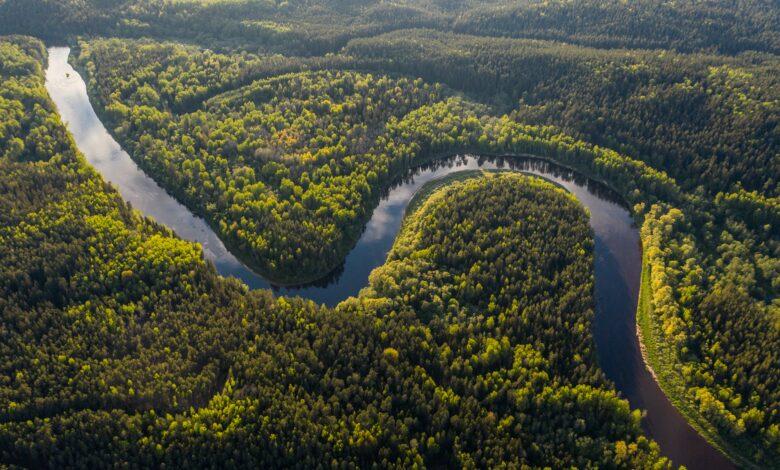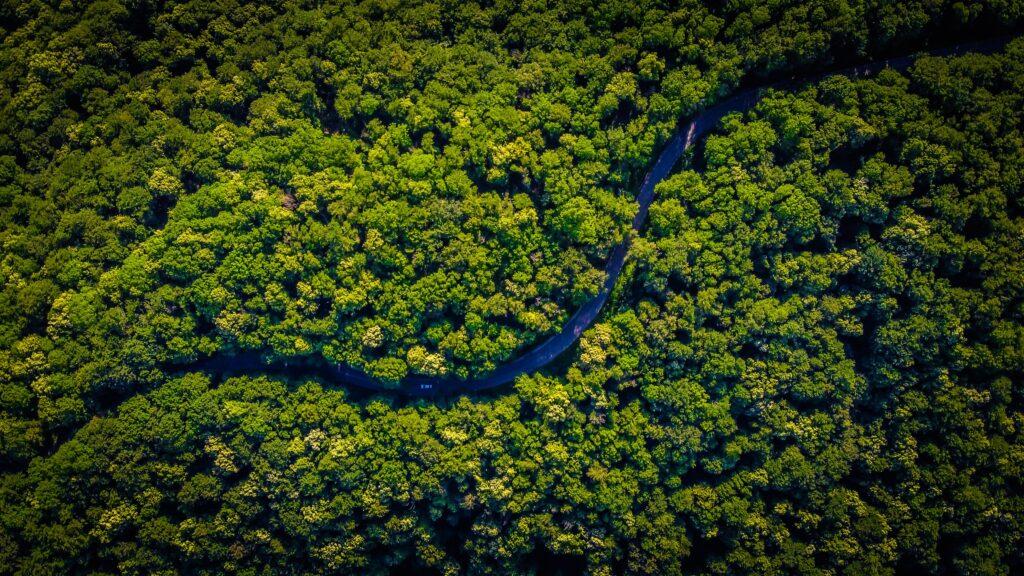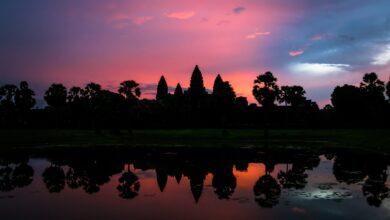🌿 A Journey through the Amazon Rainforest: Ecuador 🇪🇨
Discover the breathtaking wonders and vibrant biodiversity of the Amazon Rainforest in Ecuador!

Introduction
The Amazon Rainforest, often referred to as the “lungs of the Earth,” is a majestic and vital ecosystem that spans across multiple South American countries. One of the most enchanting segments of this expansive jungle lies in Ecuador, offering a rich tapestry of biodiversity, indigenous culture, and awe-inspiring landscapes. In this journey through the Ecuadorian Amazon, we will delve into the heart of this ecological wonder, exploring its vibrant ecosystems, engaging with indigenous communities, and understanding the critical need for conservation in the face of modern challenges.
Getting Acquainted with the Ecuadorian Amazon
Ecuador’s Amazon basin encompasses a rich tapestry of biodiversity, culture, and natural wonders, making it a captivating destination for those eager to explore the depths of the rainforest. Spanning the eastern part of the country, this vast expanse is a vital component of the Amazon Rainforest, known for its incredible ecological diversity and the unique experiences it offers to intrepid travelers.
Overview of Ecuador’s Amazonian Geography
The Ecuadorian Amazon covers roughly 40% of the country’s total land area and is characterized by dense rainforests, winding rivers, and lush vegetation. This region is divided into two main areas: the highland jungle and the lowland jungle. The highland jungle, situated on the slopes of the Andes, boasts breathtaking landscapes and is home to several indigenous communities. In contrast, the lowland jungle, which extends into the Amazon basin, is a hotbed of biodiversity, hosting an array of exotic flora and fauna.
Indigenous Communities and Their Connection to the Rainforest
The Amazonian rainforest is not just a geographical feature; it is the lifeblood of numerous indigenous communities that have thrived in harmony with nature for centuries. These communities, such as the Waorani, Kichwa, and Shuar, have deep-rooted connections to the rainforest, relying on it for sustenance, medicine, and spiritual practices. Their traditional knowledge of the ecosystem is invaluable, and many of these communities actively engage in sustainable practices, emphasizing the importance of preserving the delicate balance of the rainforest.
Unique Flora and Fauna of the Ecuadorian Amazon
The Ecuadorian Amazon is a treasure trove of unique and endemic species, making it a haven for wildlife enthusiasts. From elusive jaguars and playful river dolphins to vibrant poison dart frogs and dazzling butterflies, the rainforest is teeming with life. Towering trees, including the iconic kapok and ceiba trees, dominate the skyline, creating a canopy that shelters a myriad of creatures below. Orchids, heliconias, and countless other plant species add to the kaleidoscope of colors, making every step in the Ecuadorian Amazon a journey into a living, breathing masterpiece of nature.
As you embark on your adventure in the Ecuadorian Amazon, prepare to be enchanted by the harmonious coexistence of indigenous cultures and the awe-inspiring biodiversity that defines this extraordinary corner of the world. Whether exploring the meandering waterways, traversing dense foliage, or engaging with local communities, the Ecuadorian Amazon promises an immersive and unforgettable experience for those seeking a deeper connection with nature and culture.
Exploring the Breathtaking Biodiversity
Venturing into the heart of the Amazon Rainforest in Ecuador unveils a world of breathtaking biodiversity, where every step reveals a new species and every sound resonates with the symphony of nature. The Amazon Rainforest is a sprawling canvas of life, featuring diverse ecosystems that contribute to its unparalleled richness in flora and fauna. From the towering canopies to the intricate understory, each layer of this lush paradise supports a myriad of life forms, creating an ecosystem that is both delicate and resilient.
Diverse Ecosystems within the Amazon Rainforest
The Amazon Rainforest in Ecuador encompasses a remarkable variety of ecosystems, each with its own set of unique conditions and inhabitants. The floodplains along the riverbanks, for instance, host specialized flora and fauna adapted to the seasonal rise and fall of water levels. Moving deeper into the rainforest, one encounters terra firme forests, which are not subject to flooding and harbor a different set of plant and animal species. The astonishing diversity extends to oxbow lakes, where aquatic life thrives, and to the dense canopy where rare bird species find their haven. Exploring these diverse ecosystems offers a holistic understanding of the intricate web of life sustaining the Amazon Rainforest.
Highlighting Endemic Species in Ecuador
Ecuador stands out as a global hotspot for biodiversity, with a significant portion of its flora and fauna being endemic to the region. This means that many species are found nowhere else on Earth. The Amazon Rainforest, in particular, is a treasure trove of endemic wonders. Species like the iconic Amazon River Dolphin, the Ecuadorian Poison Dart Frog, and the elusive Yellow-headed Amazon Parrot contribute to the country’s unique biological tapestry. Explorers and wildlife enthusiasts flock to Ecuador to witness these endemic species in their natural habitats, making it a must-visit destination for those passionate about biodiversity conservation.
Conservation Efforts and Challenges in Preserving Biodiversity
While the Ecuadorian Amazon is a sanctuary of biodiversity, it faces constant threats from deforestation, illegal logging, and climate change. Conservation efforts play a crucial role in safeguarding the rich tapestry of life within the rainforest. Various organizations and local communities are actively engaged in initiatives focused on sustainable forestry, habitat protection, and wildlife preservation. However, the challenges are significant, requiring international collaboration and innovative approaches to balance the needs of development with the imperative of conserving the Amazon’s biodiversity.
As we marvel at the staggering biodiversity within the Amazon Rainforest in Ecuador, it becomes evident that our responsibility is not just to explore its wonders but to actively participate in its conservation. By understanding and appreciating the intricate relationships within this ecosystem, we can contribute to the ongoing efforts to protect and sustain the breathtaking biodiversity that makes the Ecuadorian Amazon a global treasure.
Adventure in the Heart of the Rainforest
Embarking on an adventure in the heart of the Ecuadorian Amazon promises an immersive experience for those seeking to connect with nature in its purest form. From captivating eco-tourism destinations to guided tours that unravel the mysteries of the rainforest, the options are as diverse as the flora and fauna that call this region home.
Description of Popular Eco-Tourism Destinations
Ecuador’s Amazon Rainforest is home to several popular eco-tourism destinations that offer a gateway to the wonders of the jungle. Yasuní National Park, a UNESCO Biosphere Reserve, stands out as one of the most biodiverse places on the planet. Its lush landscapes are a haven for wildlife enthusiasts, providing opportunities to spot iconic species such as howler monkeys, toucans, and elusive jaguars. The Napo River basin, another sought-after destination, allows visitors to explore the river’s intricate network and witness the unique ecosystems that thrive along its banks. These destinations not only showcase the raw beauty of the rainforest but also prioritize sustainable tourism practices to ensure the preservation of this natural wonder.
Guided Tours and Activities for Nature Enthusiasts
Guided tours in the Amazon Rainforest are curated to offer an in-depth understanding of the region’s ecosystems and inhabitants. Knowledgeable guides lead visitors through the dense foliage, unveiling the secrets of the rainforest. Canopy walks provide a bird’s-eye view of the vibrant ecosystem, while night excursions offer a chance to witness the nocturnal creatures that come alive after dark. Canoe trips along winding rivers allow for a tranquil exploration of the waterways, providing a unique perspective on the intricate tapestry of life that depends on these vital arteries. Whether trekking through the jungle or cruising down the river, nature enthusiasts are spoiled for choice with activities that showcase the Amazon’s unparalleled biodiversity.
Responsible Tourism Practices in the Amazon
As the allure of the Amazon Rainforest continues to attract travelers, responsible tourism practices have become paramount in preserving this delicate ecosystem. Eco-friendly lodges and tour operators prioritize minimizing their environmental impact, implementing sustainable practices such as waste reduction, energy efficiency, and local community engagement. Visitors are encouraged to adhere to Leave No Trace principles, respecting the delicate balance of the rainforest and supporting conservation initiatives. By choosing responsible tourism options, adventurers can contribute to the long-term protection of the Amazon, ensuring that future generations can also marvel at its beauty.
Embarking on an adventure in the heart of the Ecuadorian Amazon is not just a journey into the wild; it’s an opportunity to be a responsible steward of the rainforest. From choosing eco-conscious destinations to participating in guided tours that promote environmental awareness, every step taken in the Amazon can be a conscious effort towards sustainable and impactful tourism.

Cultural Immersion with Indigenous Communities
Embarking on a journey into the heart of the Ecuadorian Amazon offers not only a glimpse into the astounding biodiversity but also a unique opportunity for cultural immersion with indigenous communities. These communities, such as the Kichwa, Shuar, and Waorani, have preserved their rich traditions and way of life amidst the lush greenery of the rainforest. Interacting with these local tribes provides travelers with a profound connection to the Amazon’s cultural tapestry, fostering an appreciation for the symbiotic relationship between the indigenous people and their natural surroundings.
Interaction with Local Tribes and Their Traditions
Visitors to the Amazon have the privilege of engaging directly with local tribes, experiencing their customs, rituals, and daily lives. From vibrant traditional dances that tell stories of the rainforest to sharing communal meals prepared with locally sourced ingredients, these interactions offer a genuine insight into the cultural heritage of the indigenous communities. Many tribes warmly welcome guests, allowing them to participate in activities like craft-making, storytelling, and even joining in on traditional ceremonies, creating a meaningful exchange that transcends the boundaries of language and culture.
Learning About Traditional Amazonian Medicine and Practices
Indigenous communities in the Amazon have a deep-rooted knowledge of traditional medicine, often using plants and herbs from the rainforest to address various ailments. Travelers interested in holistic healing can learn from local shamans, who play a crucial role in preserving and passing down this ancient knowledge. These medicinal practices not only highlight the incredible biodiversity of the region but also emphasize the importance of sustainable and ethical harvesting of medicinal plants, contributing to the delicate balance between cultural preservation and responsible tourism.
The Delicate Balance Between Cultural Preservation and Tourism
While cultural immersion is a transformative experience, it comes with the responsibility of striking a delicate balance between cultural preservation and the impact of tourism. Indigenous communities face the challenge of preserving their traditions while embracing the opportunities that tourism brings. Sustainable tourism initiatives aim to respect the autonomy of these communities, ensuring that economic benefits go hand in hand with cultural preservation. Responsible travelers contribute to this delicate balance by respecting local customs, supporting community-led tourism initiatives, and participating in cultural exchanges that prioritize mutual understanding and respect.
In the heart of the Ecuadorian Amazon, the intertwining of cultural immersion and biodiversity creates a tapestry of experiences that goes beyond the surface of traditional tourism. By engaging with indigenous communities, learning about their rich traditions, and embracing the delicate balance required for sustainable tourism, travelers can leave with not just memories of the Amazon’s beauty but also a deeper understanding of the intricate relationship between culture, nature, and responsible exploration.
The Threats to the Amazon Rainforest
The Amazon Rainforest, often referred to as the “lungs of the Earth,” faces severe threats that jeopardize its delicate ecosystems and global ecological balance. Understanding these threats is crucial for fostering awareness and encouraging collective action to protect this invaluable natural treasure.
Deforestation and Its Impact on the Ecosystem
One of the most pressing threats to the Amazon Rainforest is deforestation, driven by agricultural expansion, logging, and infrastructure development. As vast tracts of forest are cleared, the intricate web of life within the Amazon suffers irreparable damage. Deforestation disrupts habitats, leading to the loss of countless plant and animal species. Additionally, the removal of trees contributes to a decline in the regulation of climate patterns, with repercussions felt not only locally but globally. The fight against deforestation requires concerted efforts to implement sustainable land-use practices, promote responsible forestry, and enforce stringent conservation policies.
Climate Change and Its Effects on the Amazon
Climate change poses a significant threat to the Amazon Rainforest, impacting weather patterns, temperature, and precipitation. Rising temperatures and altered rainfall regimes can lead to prolonged droughts, affecting the health of the forest and making it more susceptible to fires. Increased frequency and intensity of wildfires exacerbate the loss of biodiversity and contribute to the release of vast amounts of stored carbon into the atmosphere, further accelerating global climate change. Mitigating the effects of climate change in the Amazon necessitates international cooperation, sustainable land management, and the reduction of greenhouse gas emissions on a global scale.
Efforts and Initiatives for Sustainable Development
In the face of these daunting threats, numerous efforts and initiatives are underway to promote sustainable development and conservation in the Amazon Rainforest. Local communities, environmental organizations, and governments are collaborating to establish protected areas, implement sustainable land-use practices, and support indigenous-led conservation projects. Sustainable development initiatives aim to find a balance between human needs and environmental preservation, promoting economic activities that are compatible with the long-term health of the rainforest. Responsible ecotourism, community-based conservation, and reforestation projects are integral components of these efforts, offering hope for the preservation of the Amazon’s ecological integrity.
As we navigate the challenges posed by deforestation and climate change in the Amazon Rainforest, the importance of sustainable development and conservation initiatives cannot be overstated. By supporting and amplifying these efforts, individuals, communities, and governments can contribute to the protection of this irreplaceable ecosystem, ensuring that the Amazon continues to thrive as a vital component of our planet’s health and biodiversity.
FAQs
Q: How do I reach the Amazon Rainforest in Ecuador?
A. Embark on a flight to Quito or Coca, followed by a boat ride into the heart of the rainforest.
Q: What wildlife can I expect to see in the Amazon Rainforest?
A. The Amazon is home to diverse species, including monkeys, toucans, anacondas, and jaguars.
Q: Are there safety precautions for Amazon exploration?
A. Yes, prioritize guided tours, carry essentials, and follow safety guidelines to ensure a secure adventure.
Q: What is the significance of the Amazon River in the rainforest ecosystem?
A. The Amazon River sustains diverse ecosystems, serving as a vital lifeline for flora and fauna.
Q: Can I participate in sustainable initiatives during my visit?
A. Absolutely! Engage in eco-friendly practices and support local conservation efforts.
Q: What is the best time of year to visit the Amazon Rainforest?
A. Visit during the dry season (June to November) for optimal weather and wildlife sightings.
Conclusion
As we conclude our expedition through the Ecuadorian Amazon, the echoes of the rainforest’s biodiversity, cultural richness, and environmental significance linger in our minds. The delicate balance between human interaction and nature’s sanctity becomes increasingly apparent, urging us to reflect on our responsibility as stewards of this precious ecosystem. The Amazon Rainforest is not only a national treasure for Ecuador but a global asset that demands our collective commitment to sustainable practices and conservation. Let our memories of this journey serve as a catalyst for positive change, inspiring a harmonious coexistence between humanity and the unparalleled wonders of the Amazon.
UP NEXT
https://touristeyes.com/island-hopping-in-the-philippines-palawan-and-boracay/





Facebook Comments